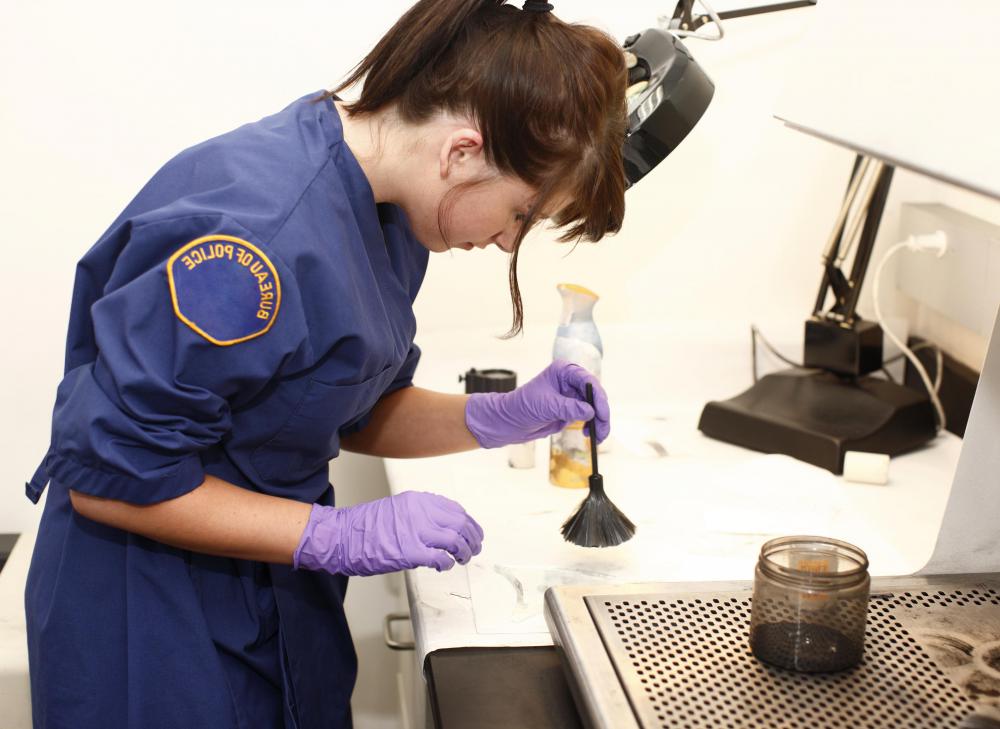At MyLawQuestions, we're committed to delivering accurate, trustworthy information. Our expert-authored content is rigorously fact-checked and sourced from credible authorities. Discover how we uphold the highest standards in providing you with reliable knowledge.
How do Police Gather Latent Fingerprints?
Gathering latent fingerprints is a difficult, yet necessary, part of crime scene investigation. Police investigators begin searching for latent fingerprints by dusting the crime scene with powder. The powder adheres to the prints, making them more visible. The search can be assisted with the use of specialized lights depending on the specific powder used. Once prints are apparent, investigators take detailed photographic, physical, and written records of the marks for use in identifying individuals involved in the incident.
Latent fingerprints as often formed through the moisture on an individual's fingertips. The body's sebaceous glands produce an oil that coats the skin's surface, effectively contouring to the shape of the fingertips' many ridges. This often causes individuals to leave barely-visible marks on the surfaces of the objects they touch. Forensic scientists utilize methods of fingerprinting based on these principles.

Dusting, for example, uses the latent fingerprints' own moisture to make them more visible. The powders investigators use stick to the oil or other liquid left behind on the print, effectively making it more solid and well-defined. Some investigators use photo-reactive powders to aid in latent fingerprint detection, as the dusted prints become more apparent underneath certain light wavelengths. If a fingerprint is spotted, investigators very carefully brush off any excess powder in the vicinity in order to isolate the print.

Once latent fingerprints are dusted and cleaned, investigators take great care in documenting details about the print, its location in the crime scene, and the time of its discovery. A crime scene photographer is called to take high-resolution photographs of the fingerprints and the surrounding areas. Investigators can then take a clear piece of tape and place it gently over the prints, using the tape's adhesive side to lift an imprint of the marks. Lifting fingerprints is done as carefully as possible, so as not to inadvertently smudge and ruin the evidence. The lifted prints are then transferred to a card for further investigation.

Although gathering latent fingerprints is an effective method of identifying individuals present at a crime scene, they do not necessarily imply a suspect's guilt. The crime scene might be tampered with in the time between the crime and its discovery, possibly implicating individuals who had nothing to do with the incident. In addition, matching latent fingerprints with those stored in the police database is a lengthy process, even with computer assistance. Latent fingerprints are still considered valuable pieces of evidence, however, as any and all information on a crime scene is needed to conduct a proper investigation.
AS FEATURED ON:
AS FEATURED ON:













Discuss this Article
Post your comments